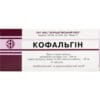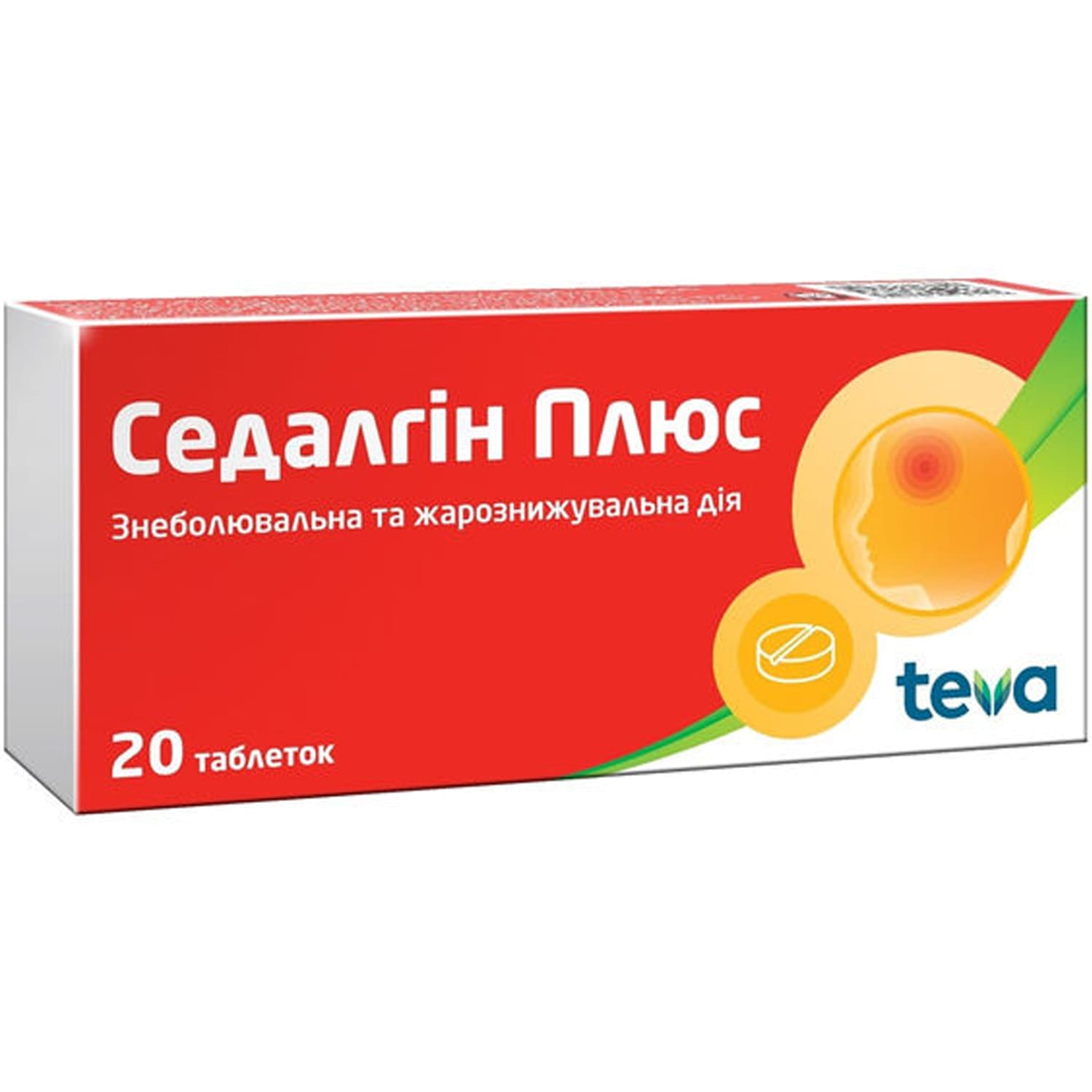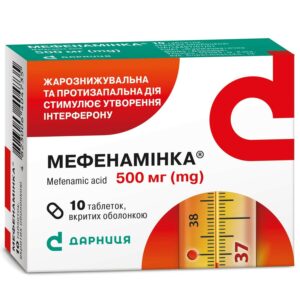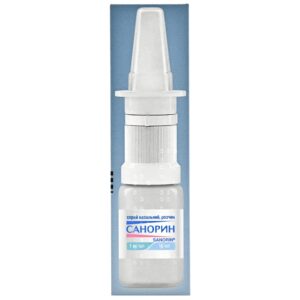Pharmacological properties
Pharmacodynamics. Metamizole sodium is a pyrazolone derivative that belongs to the group of non-narcotic analgesics. It has a pronounced analgesic and antipyretic effect. It does not have a hypnotic effect, does not suppress the respiratory center, does not lead to euphoria and addiction. Metamizole exhibits analgesic effects of both the peripheral type, inhibiting the synthesis of endogenous algogens, and the central type, inhibiting the activity of nociceptive neurons in the posterior roots of the spinal cord. An important role in the pharmacological effects of metamizole is played by its ability to inhibit the activity of COX-1 and especially cyclooxygenase-2, which leads to a decrease in the synthesis of prostaglandins. Metamizole also has a membrane-stabilizing effect.
Caffeine has a slight stimulating activity on the CNS. The main effect of caffeine is vasoconstriction, which affects certain types of headache and hypotension. It is believed that in some painful conditions it has a direct analgesic effect. Caffeine enhances the effect of metamizole, promoting its penetration into the brain tissue. When combining caffeine with analgesics, a synergistic effect occurs.
Thiamine hydrochloride (vitamin B 1) has many functions in the body’s metabolism. It is part of a number of enzymes and is the main part of the cocarboxylase molecule, which catalyzes the burning of pyruvic acid and facilitates the breakdown of carbohydrates. By phosphorylation, thiamine is converted into its active form – thiamine pyrophosphate, which as a coenzyme participates in the pentose phosphate cycle, the decarboxylation of α-keto acids and the formation of acetyl-coenzyme A in the Krebs cycle. In the nervous system, about 90% of thiamine is contained in the mitochondria of axons, and 10% is included in the membranes of axons. By promoting the decarboxylation of pyruvic acid, it has a positive effect on the elimination of inflammatory processes in the nervous system. Thiamine facilitates the synthesis of the mediator acetylcholine and inhibits the enzyme that breaks it down – cholinesterase, thus improving the conduction of nerve impulses. When used in high doses, it has some analgesic effect.
Due to the presence of metamizole, which acts on the enzymes responsible for the metabolism of drugs, the pharmacokinetics of individual components used in combination differs to some extent from the pharmacokinetics of drugs when used alone.
Pharmacokinetics. The combined drug Sedalgin plus is rapidly absorbed, and its therapeutic effect manifests itself after 1 hour.
Indication
Symptomatic treatment of pain syndrome in:
- migraines, tension headaches;
- inflammatory and degenerative diseases of the musculoskeletal system;
- postoperative conditions;
- diseases of the peripheral nervous system (radiculitis, plesitis, neuritis, neuralgia, polyneuritis, polyneuropathy);
- dysmenorrhea.
Application
Sedalgin Plus tablets are taken orally after meals, washed down with water.
Recommended dose for adults and children over 16 years of age: 1 tablet 3 times a day.
The maximum dose should not exceed 6 tablets per day.
Recommended dose for children aged 12-16 years: ½-1 tablet 3 times a day.
The maximum dose should not exceed 4 tablets per day.
The course of treatment with Sedalgin Plus is no more than 3 days.
Contraindication
Hypersensitivity to the active or auxiliary substances that make up the drug; hypersensitivity to pyrazolone derivatives (butadione, tribuzone, antipyrine) and xanthine; children under 12 years of age, elderly, pregnancy and breastfeeding; ba; leukopenia; anemia; thrombocytopenia; cytostatic or infectious neutropenia, agranulocytosis, hepatic porphyria; congenital deficiency of glucose-6-phosphate dehydrogenase; pronounced increase in blood pressure, organic diseases of the cardiovascular system, including severe atherosclerosis, severe hypertension, acute myocardial infarction; decompensated heart failure, paroxysmal tachycardia; glaucoma; severe renal and hepatic failure; increased excitability, insomnia; suspicion of acute surgical pathology, allergic diseases, idiosyncrasy; Do not use simultaneously with monoamine oxidase inhibitors (MAOIs) and within 2 weeks after discontinuing MAOIs.
Side effects
Adverse reactions to the drug may occur:
- from the side of the central nervous system: insomnia, dizziness, increased excitability, anxiety, restlessness, mild tremor, visual impairment, headache, convulsions, increased reflexes, tachypnea. With prolonged uncontrolled use of the drug in high doses, addiction (reduction of the analgesic effect) and dependence are possible, therefore, with sudden withdrawal of the drug after prolonged use, increased effects on the CNS, increased fatigue, drowsiness, muscle tension, depression are noted.
- hypersensitivity reactions, including skin and mucous membrane rashes; conjunctivitis, itching, redness, urticaria, angioedema, bronchospasm, anaphylactic shock, Lyell’s and Stevens-Johnson syndromes, other allergic reactions;
- from the cardiovascular system: feeling of tightness in the chest, arrhythmias, tachycardia, increased heartbeat (palpitations), increase / decrease in blood pressure;
- From the side of the hematopoietic system: with prolonged use, leukopenia, granulocytopenia, agranulocytosis, hemolytic and aplastic anemia, purpura, thrombocytopenia are possible;
- from the digestive and hepatobiliary system: loss of appetite, nausea, gastrointestinal discomfort, vomiting, diarrhea, cholestasis, jaundice, liver dysfunction, hepatitis, exacerbation of gastritis and stomach ulcers;
- from the urinary system: development of acute renal failure, interstitial nephritis, oliguria, anuria, increased diuresis / increased frequency of urination, increased creatinine clearance, increased excretion of sodium and calcium, proteinuria, staining of urine in red;
- others: nasal congestion;
- impact on laboratory test results: hypo- or hyperglycemia; impact on laboratory tests (see Features of use).
Special instructions
Do not exceed the recommended doses of the drug.
Use with caution in case of impaired renal and/or hepatic function; in case of a history of gastric and duodenal ulcers; in case of stomach diseases (achalasia, gastroesophageal reflux, pyloric stenosis of the stomach), inflammatory bowel diseases, including nonspecific ulcerative colitis and Crohn’s disease; in case of prostatic hyperplasia; in case of chronic bronchitis and bronchospasm in the presence of hyperthyroidism; in case of heart rhythm disorders, coronary artery disease, severe hypotension, cardiovascular failure, severe headache of unknown etiology, with a long history of alcohol abuse.
Do not use the drug to eliminate acute abdominal pain (until the cause is determined). Since metamizole sodium has anti-inflammatory and analgesic properties, the drug may mask signs of infection, symptoms of non-infectious diseases and complications with pain syndrome, and may complicate their diagnosis.
The drug may affect the psychophysical state of patients when used simultaneously with alcohol and drugs that depress the central nervous system. In view of this, when using the drug, one should refrain from drinking alcoholic beverages.
The drug can affect the central nervous system – both on excitation and inhibition of nervous activity, as well as on blood pressure, and stimulate or inhibit cardiac activity.
Do not use simultaneously with other NSAIDs and metamizole.
When using analgesics every other day or more often, the appearance or increase in the severity of an existing headache after prolonged treatment with analgesics (more than 3 months) is possible. Headache caused by excessive use of analgesics should not be treated by increasing the dose. In such cases, treatment should be discontinued after consulting a doctor.
When using the drug, you should avoid excessive consumption of coffee, strong tea, other tonic drinks and medications containing caffeine. This can cause sleep problems, tremors, tension, irritability, and palpitations.
When used in children, constant medical supervision should be carried out. It is necessary to monitor the qualitative and quantitative composition of peripheral blood.
Regular long-term use of the drug is not recommended due to the myelotoxicity of metamizole sodium salt.
When prescribing a longer course of treatment (more than 7 days), it is necessary to monitor the blood picture / qualitative and quantitative composition of peripheral blood (especially leukocyte formula), kidney and liver function.
Patients should be warned before starting treatment that if unmotivated chills, fever, sore throat, difficulty swallowing, bleeding gums, pale skin, asthenia, vaginitis or proctitis develop, the drug should be immediately discontinued. The drug should also be discontinued if a rash appears on the skin and mucous membranes. If these symptoms occur, you should immediately consult a doctor.
Excipients. Sedalgin plus contains wheat starch, so the use of this medicine is dangerous for patients with celiac disease (gluten enteropathy).
Effect on laboratory tests: Metamizole sodium metabolites can change the color of urine to red, which has no clinical significance.
Caffeine may affect the results of tests using adenosine or dipyridamole. Therefore, Sedalgin Plus should not be used for at least 12 hours before the tests.
Caffeine may cause a false increase in plasma uric acid levels, as determined by the Bittner method.
Caffeine may lead to a slight increase in the concentration of 5-hydroxyindoleacetic acid (5-HIAA), vanillylmandelic acid (VMA), and catecholamines in the urine, which may lead to false-positive diagnostic results for pheochromocytoma and neuroblastoma.
Use during pregnancy and breastfeeding. The drug is not used during pregnancy or breastfeeding.
Ability to influence the reaction rate when driving vehicles or working with other mechanisms. During treatment, caution should be exercised when driving vehicles and working with mechanisms due to the possibility of developing adverse reactions from the nervous system.
Children. Not prescribed for children under 12 years of age.
Interactions
Ethanol enhances the analgesic effect of the drug, and caffeine reduces the effect of central nervous system depression. The simultaneous use of other hepatotoxic drugs and drugs that suppress hematopoiesis should be avoided. Due to the induction of liver enzymes, the activity of coumarin anticoagulants decreases. Tempidon enhances and prolongs its effect. The therapeutic effect is enhanced by tricyclic antidepressants, oral contraceptives, allopurinol as a result of enzyme inhibition and slowing down the biotransformation of the drug. The drug does not affect the effect of uterokinetic and uterotonic drugs. When used simultaneously with nonsteroidal anti-inflammatory drugs, it enhances their effect and toxicity in relation to the gastrointestinal tract and hematopoiesis.
The combination of Sedalgin Plus with other drugs requires special attention, since metamizole, which is part of the drug, is an enzyme inducer. With simultaneous use with other antipyretic, analgesic and anti-inflammatory drugs, the risk of allergic reactions and side effects increases. With the combined use of Sedalgin Plus and drugs that suppress bone marrow function, there is a possibility of damage to white blood cells. Neuroleptics and tranquilizers potentiate the analgesic effect of Sedalgin Plus. Simultaneous use with chlorpromazine can lead to hypothermia.
Some antidepressants, oral contraceptives, and allopurinol slow down the breakdown of metamizole and, thus, may increase the toxicity of the drug.
The drug reduces the concentration of cyclosporine A in the blood, so it can be dangerous in the presence of transplants.
Concomitant use with sympathomimetics may lead to CNS disorders.
Caffeine can enhance the effect of ergotamine; reduce the effect of opioid analgesics, anxiolytics, hypnotics and sedatives. Caffeine is an antagonist of anesthetics and other drugs that depress the central nervous system, and a competitive antagonist of adenosine drugs. Enhances the absorption, action and toxicity of glycosides. When used with xanthine derivatives, psychostimulants – potentiation of their effects. It is possible to increase the thyroid effect with the simultaneous use of caffeine with thyroid-stimulating agents. Cimetidine, isoniazid enhance the effect of caffeine. Caffeine reduces the concentration of lithium in the blood.
Overdose
In case of accidental ingestion of a large number of tablets, the following clinical symptoms are noted: bullous-urticarial and petechial, sometimes morbilliform and typhoid rash; in some cases, anaphylactic shock, hallucinations, tremor, Meniere-like phenomena, coma and tonic-clonic convulsions, nausea, vomiting, agitation, insomnia, headache, dizziness, tinnitus, palpitations, weakness, melena and hematemesis occur, in more severe cases – oliguria, up to anuria, epileptiform convulsions, agranulocytosis, aplastic and hemolytic anemia, hemorrhagic diathesis.
In case of an overdose of metamizole, hypothermia, a pronounced decrease in blood pressure, dysphagia, shortness of breath, stomach pain / gastritis, weakness, drowsiness, delirium, hemorrhagic syndrome, acute renal and hepatic failure, and paralysis of the respiratory muscles are also possible.
High doses of caffeine can cause epigastric pain, effects on diuresis, rapid breathing, extrasystole, tachycardia or cardiac arrhythmia, effects on the CNS (dizziness, insomnia, nervous excitement, irritability, state of affect, anxiety, tremor, convulsions).
Treatment. General measures to reduce absorption: administration of agents that provoke vomiting, gastric lavage, administration of activated charcoal, laxatives. Symptomatic treatment is carried out. There is no specific antidote.
Storage conditions
In the original packaging at a temperature not exceeding 25 °C.
Information about the medicinal product for healthcare professionals.









Reviews
There are no reviews yet.